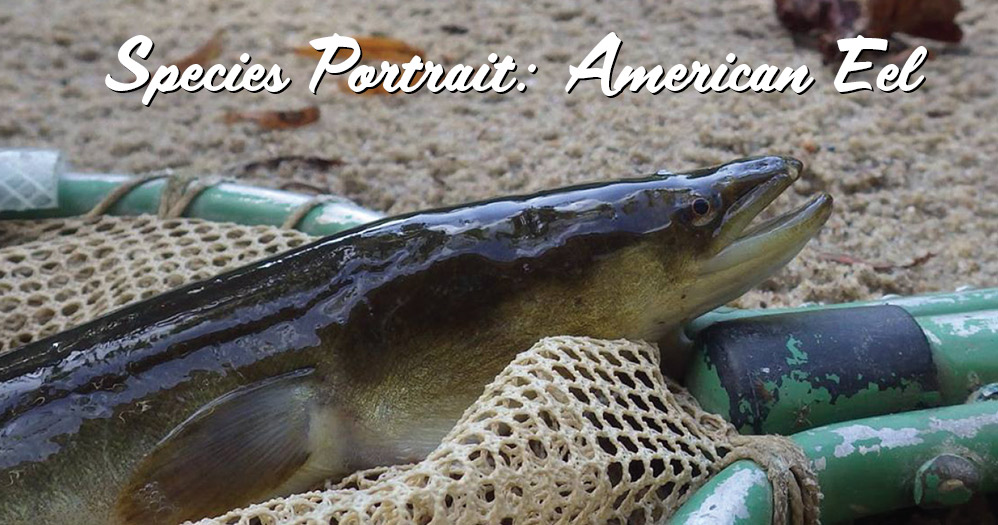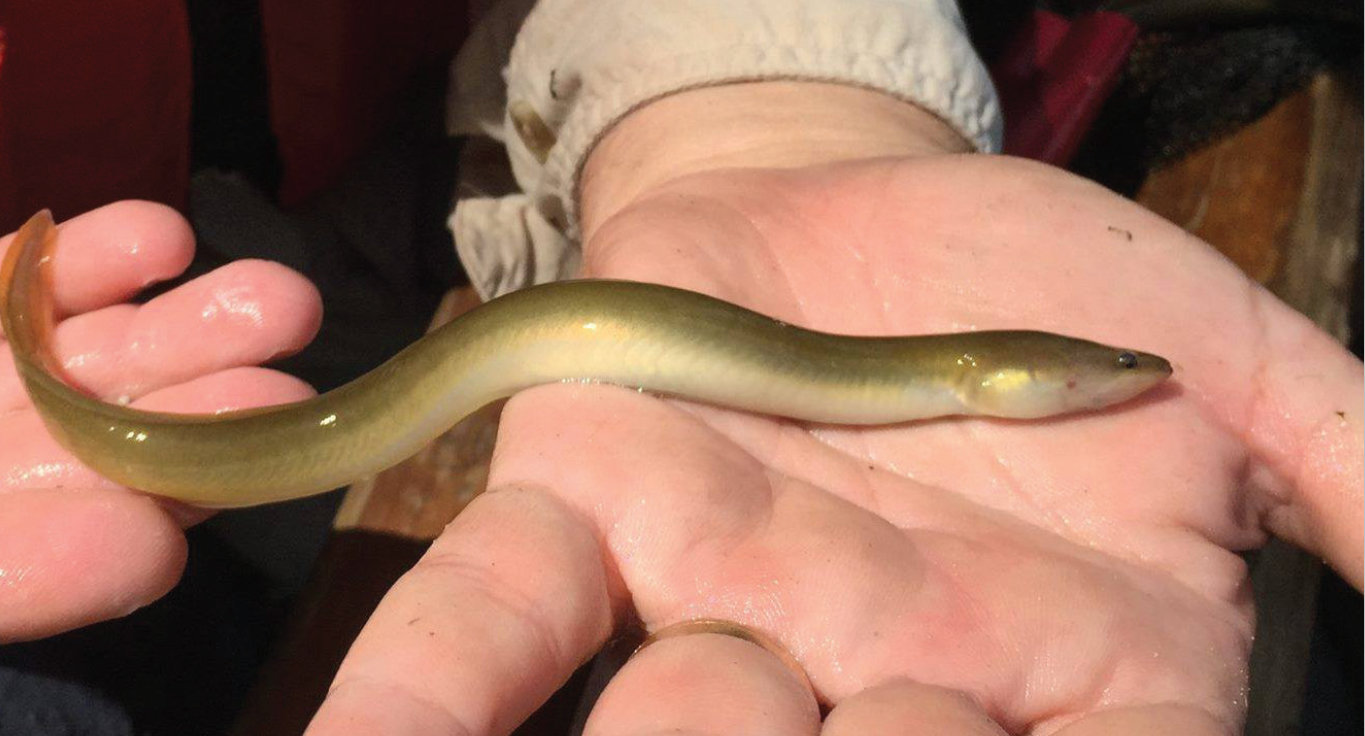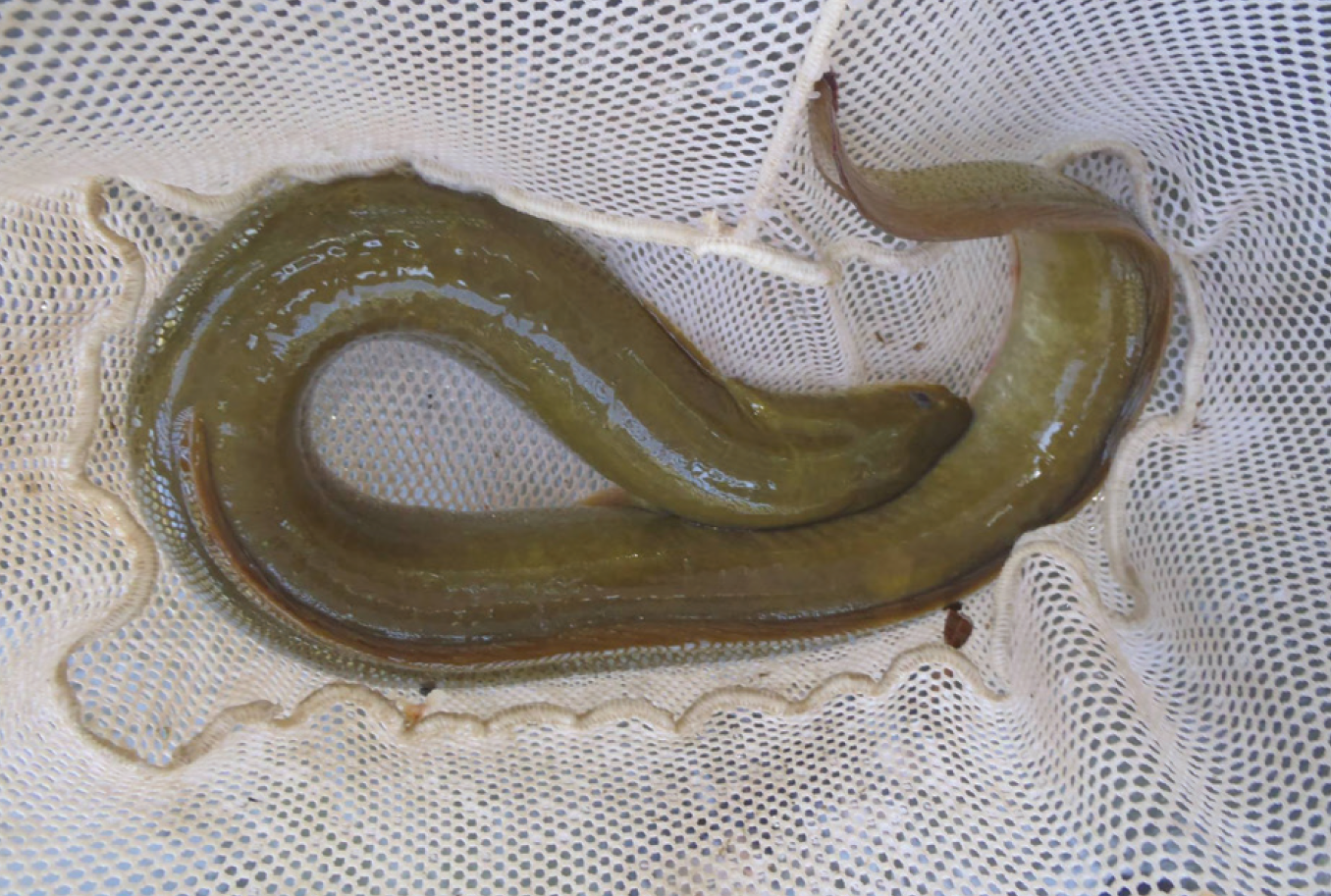Species Portrait: American Eel
4/4/2018 10:10:40 AM
By James Hill, Public Exhibits Coordinator for MDWFP's Mississippi Museum of Natural Science

Salmon, the subject of countless documentaries, probably are the most famous of the migrating fish species. They are celebrated for their long journies upstream to reproduce (or spawn). But there is a lesser-known fish that undertakes a journey just as arduous: the American eel.
Salmon are known for living in the ocean and migrating up rivers to spawn (they are anadromous), but the American eel does the reverse (they are catadromous), traveling downstream into the ocean to return to their natal grounds to spawn. And while we have learned many things about the eel since Aristotle theorized in 350 BC that they sprung fully formed from the mud at the bottom of rivers, there are many parts of the eel’s long, strange life cycle that never have been observed by scientists. For example, while we know where they spawn, we have never seen an adult eel in its spawning grounds, nor seen its spawning behavior. Regardless, what we do know about the American eel paints a fascinating picture of a fish that, through a mix of metamorphosis and migration, can travel thousands of miles in its lifetime.
As an example, let us say the story of a female American eel starts at the muddy bottom of a Mississippi oxbow lake, where for 20 years she contently feeds on whatever she can catch or scavenge at night. But one cool fall evening a change comes over her, and she begins the long journey downstream to the sea to spawn. If she encounters any obstructions on her journeys, such as a waterfall or a dam, she slithers out of the water and crawls across the ground around them. Eels can survive out of water for up to several hours if necessary by absorbing oxygen through their skin. Eventually, she reaches the ocean, where the next part of her amazing migration begins.
The ocean leg of the eels’ migration can be several thousand miles long, though this eel is fortunate. She enters at the Gulf of Mexico and “only” travels 1,000 miles to reach her destination (the Sargasso Sea). Her body slowly changes to prepare her for this, from a fish that adapts to live at the bottom of a shallow swamp into one capable of traversing the open ocean. She increases her fat reserves (to fuel her marathon journey), her eyes double in size (to see better in the deep water), and her swim bladder becomes more capable of controlling her buoyancy. After weeks of swimming through the ocean, she finally arrives at the clear, warm waters of the Sargasso Sea, a two-million-square-mile area of water located east of Bermuda. Here, she releases millions of eggs, which will hopefully be fertilized by males that have made a similar journey, and then she dies.

Her journey, however, has not all been in vain. Some of her eggs will be fertilized, and float to the ocean surface. Here they hatch into transparent, leaf-shaped larvae called leptocephali. These tiny larvae drift in the Gulf Stream for up to a year until they finally encounter the continental shelf off of the American east coast. By this time the leptocephali have begun changing into the juvenile phase of the American eel, known as glass eels. Glass eels are no more than three inches long and, as the name suggests, are transparent. As they gradually approach the shore, they become more pigmented, eventually turning a gray to greenish brown, and are known as elvers. While some elvers choose to remain in the brackish estuaries, most choose to begin their long swim up freshwater rivers and streams. As they migrate upstream they continue to grow, until they reach the second-to-last stage in their life cycle and become yellow eels. Yellow eels will live in rivers, streams, lakes, and ponds for many years before they, too, mature sexually and begin their long migration back to the Sargasso Sea, where they were born.



